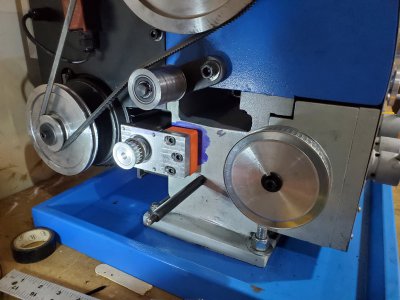You shamed me into doing the keyway. It didn't turn out very precise because my tool grinding sucked. It's tough to hold a tool that can't be more than about 13mm long. But, I got it done and my imprecision in oversizing seems to have not created any issues. Perhaps the set screw that bears on the key way slot compensates. Someday I should get a good grinder setup and make a proper tool.Buy the 10 mm one, bore it out like you said and cut a new keyway. I'm in the process of doing that myself. I just made a tool yesterday to cut the keyway. Here is a couple links of how others have done it. Mine is simple, more like Blondihacks.
In any event, the pulley is now mounted and my servo mount is also in place. Belt is supposed to arrive in a couple of days along with the pulley and belt for the encoder. I only have about 1mm in either direction for adjustment, so I hope the belt calculator at SDP-SI is correct.


